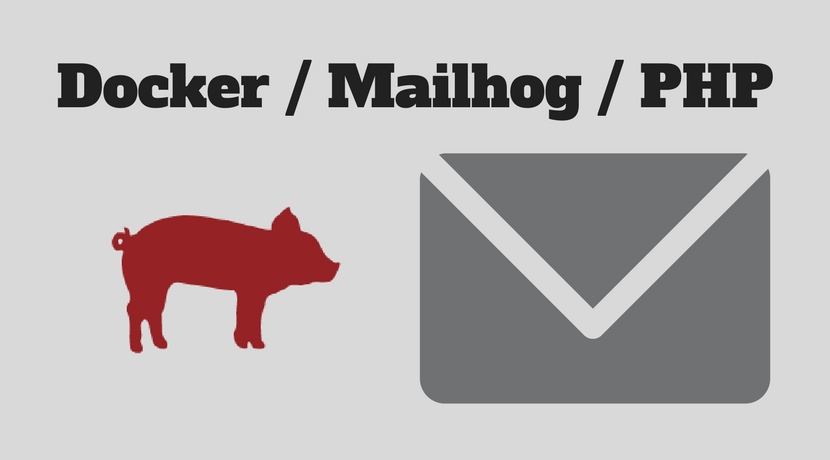This post describes how you can install and configure Mailhog as SMTP Server for your local PHP development environment. This is useful to catch all outgoing emails.
A running PHP and Docker environment is required to follow the instructions.
Install Mailhog
On my local machine, I have docker-compose.yml file which contains a lot of services (e.g MySQL, Elastic, Redis) which I use during the daily development.
For our mailhog example we need only one service. Please create a docker-compose.yml with this content:
version: '2'
services:
mailhog:
container_name: mailhog
image: mailhog/mailhog
restart: always
ports:
- 1025:1025
- 8025:8025
Run docker-compose up -d mailhog to create and start the container. If the mailhog image does not exist, Docker will start to download the image from official Docker-Hub.
Verify if everything is up and running.
docker-compose ps Name Command State Ports ------------------------------------------------------------------------------------- mailhog MailHog Up 0.0.0.0:1025->1025/tcp, 0.0.0.0:8025->8025/tcp
No you can use the TCP Port 1025 for sending email over SMTP protocol. The Port 8025 contains the Web-UI.
Configure PHP
Out goal is that PHP’s intern command “mail” uses our freshly installed Mailhog server. To effect this, we need to set the “sendmail_path” setting.
Please modify your php.ini file and set the following directive:
sendmail_path = docker exec -i mailhog sendmail -S localhost:1025From now, every “mail” command call uses the docker container with the name “mailhog” to send any email.
We can test this with a simple PHP CLI call:
php -r 'mail("foo@example.com", "test", time(), "From: Mailhog <mailhog@example.com>");'
We should now be able to see the arrived message in the Web-UI. Open your browser with the address “http://localhost:8025”.
– Creator of n98-magerun
– Fan of football club @wormatia
– Magento user since version 0.8 beta
– 8x certified Magento developer
– PHP Top 1.000 developer (yes, I’m PHP4 certified and sooooo old)
– Chief development officer at netz98

